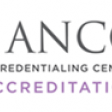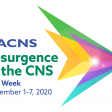Despite national standards for sponge-counting, this common operating room (OR) task is error prone for multiple reasons. In 2006, the Perioperative management and operating room nurses began their journey to identify suitable solutions to assist nurses with sponge counting.
The goal has always been to improve patient safety and OR efficiency. Unintentional retention of a foreign body after surgery, such as a sponge, is a preventable error. Adverse patient outcomes include sepsis, infection, second surgery to remove the object, and prolonged length of stay. Failure to maintain an accurate sponge count resulting in retained sponges is a medical error that can cause patient harm, adverse publicity and increased licensing body investigations and penalties.
Since 2007, Perioperative Services has implemented the data matrix code system SurgiCount Safety - Sponge System in an effort to address this risk and improve patient safety. Similar to barcoding technology used for the retail industry, each sponge in the Safety - Sponge System is embedded with a unique identification number, so the system can identify if a sponge is missing.
Implementation of this new code system did entail training and workflow changes not only from a technological perspective, but also related to changes in equipment needs, communication, and efficiency which positively impacted teamwork amongst the perioperative staff.
Prior to implementation, the incidence of having a retained sponge occurred approximately once every three months. Following implementation of the SurgiCount Safety - Sponge System, no retained sponge cases have been noted for three years. Use of the system did not prolong OR case duration or have a negative impact on workflow, and the system proved to be highly reliable. Adherence to practices related to counting, documentation and communication leads to improved outcomes for patients. Implementation of SurgiCount Safety - Sponge System has helped UCSF improve patient safety by providing the technology to support a standard, efficient and easy-to-use process to complete sponge counts in the OR.



